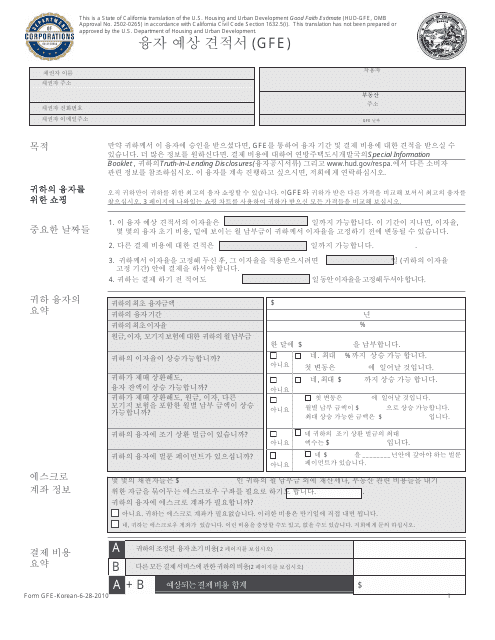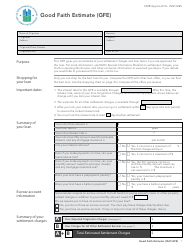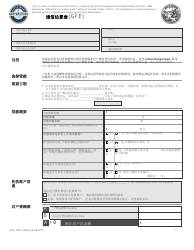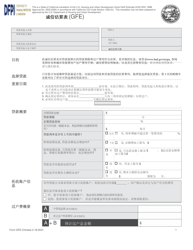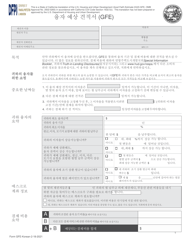Good Faith Estimate Form - California (Korean)
This is a legal document that was released by the California Department of Financial Protection and Innovation - a government authority operating within California.
The document is provided in Korean.
FAQ
Q: What is a Good Faith Estimate Form?
A: A Good Faith Estimate Form is a document provided by a lender to a borrower that outlines the estimated costs associated with a mortgage loan.
Q: What information does a Good Faith Estimate Form include?
A: A Good Faith Estimate Form includes information such as the loan amount, interest rate, closing costs, and other fees associated with the mortgage loan.
Q: Who provides the Good Faith Estimate Form?
A: The lender providing the mortgage loan is responsible for providing the Good Faith Estimate Form to the borrower.
Q: Why is a Good Faith Estimate Form important?
A: A Good Faith Estimate Form is important because it helps borrowers understand the costs and fees associated with a mortgage loan, enabling them to compare different loan offers and make an informed decision.
Q: Is the Good Faith Estimate Form legally binding?
A: No, the Good Faith Estimate Form is not legally binding. It is an estimate of the costs associated with a mortgage loan and may change before the loan is finalized.
Q: Do I have to pay any fees for receiving a Good Faith Estimate Form?
A: No, lenders are not allowed to charge any fees for providing a Good Faith Estimate Form to borrowers.
Q: Can I negotiate the fees listed on the Good Faith Estimate Form?
A: Yes, borrowers can negotiate some of the fees listed on the Good Faith Estimate Form with the lender to potentially lower the overall cost of the mortgage loan.
Form Details:
- Released on June 28, 2010;
- The latest edition currently provided by the California Department of Financial Protection and Innovation;
- Ready to use and print;
- Easy to customize;
- Compatible with most PDF-viewing applications;
Download a printable version of the form by clicking the link below or browse more documents and templates provided by the California Department of Financial Protection and Innovation.
